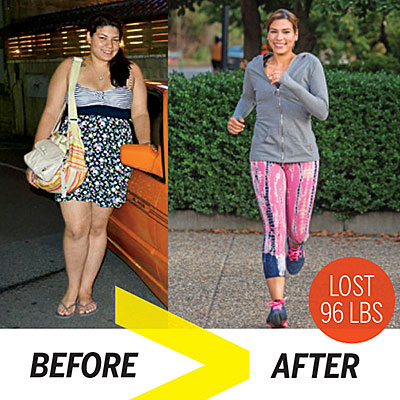Use These 7 Tips To Lean Out Without Tracking Food!
If you’d like to get lean but have little interest or inclination in tracking and logging your food intake, these tips from Eat To Perform might be your saving grace!
1. Start with more food and gradually eat less.
The best way to lose body fat is to build a solid foundation. If you are already eating next to nothing, you have no where to go. Start off by gradually adding to your food intake over the course of three to four weeks. This is called a diet break and will initially cause weight gain but it is mostly water and muscle glycogen. Once you’ve stabilized your weight at the higher food intake, you can then gradually remove foods, mostly carbohydrates, and start to see the downward trend in your weight as you lose fat.
Just remember that as a general rule, you will want to lose 1% of your body weight each week (about 1-2 pounds), depending on how heavy you are.
2. Eat plenty of satiating foods.
The fat, fiber and water in our food contributes to how full we feel after. When you are full, your appetite is suppressed. If you aren’t hungry, it is much, much easier to maintain a calorie deficit.
In every meal, try to include fiber packed veggies like spinach, kale, asparagus, broccoli, and lettuce. It is also important include protein as well like chicken, beef or eggs. And don’t forget to include fat in your meals — think avocados, walnuts, salmon and olives.
3. Focus on protein.
When you are in a calorie deficit, it is absolutely imperative that you are eating an adequate amount of protein. Protein helps you maintain lean mass but it is also thermogenic. This means that it actually ADDS to your calorie burn. The least complicated way to make sure you are getting enough protein is to aim for 1 gram of protein per pound of bodyweight. If you are going to put an effort into tracking something in your diet, protein is probably the best one. If you are finding it hard to get the right amount of protein from your dietary sources, don’t be afraid to try a protein shake.
4. Get light activity on your rest days but not too much.
Most of us have a pretty sedentary life outside of our workout routines. This makes it easy to overshoot our calorie intake. But even on your rest days you want to include a small deficit. Go for a walk or a hike, do your gardening. Nothing strenuous as your rest days are just as important as your gym days.
5. Lift weights on a regular basis.
Resistance training is crucial if you want to maintain muscle mass. Although it is tough to build muscle while in a calorie deficit, it is relatively easy to maintain it as long as you keep working. How do you maintain your muscle? The same way you built it. Whatever built your muscles will maintain them. If you aren’t lifting at the moment, it will be useful to do a little research and find a program that works for you and your particular fitness goals.
6. Eat most of your carbs around training.
Carbohydrates are really important when it comes to performance. They are a quick source of energy and the majority of cells in the human body require carbohydrates to function. Try to focus you carb consumption around your workout, before, during and after since it will be at those times that your energy requirement is the highest. When you aren’t working out, focus on protein and fat.
7. Give yourself room to grow.
Your fat loss will, at some point, slow to a crawl before you stall. Don’t panic. It just means your body has adapted. You will need to mix things up and take a diet break like the one mentioned in the first point. Increase your intake slowly until you stabilize your body weight and then you can start the work again. Three weeks is about all you will need to stabilize and if you take things slowly and gradually, you won’t put on a bunch of body fat. As for how much food you should be adding, here’s what Eat To Perform has to say:
“you should weigh yourself in the morning on an empty stomach after you use the bathroom (this is important) a couple times a week and ensure that there is a slight upward trend in your morning weight – you want to gain about 3% of your weight back over this 3 week period. If you’re stalled out at (say) 140 lbs. you want to gain between 3-5 lbs. of morning weight on your diet break. Much more than that and you risk putting on some unnecessary body fat. You should notice at some point that your weight gain levels off, your energy levels go up, and you start to look “full”. At this point, you can decide what’s best. You can either stay there for a while or gradually take out some food until your weight starts to go down again as you should have done at the beginning of your fat loss phase.”
There you have it! Are you in the process of leaning out? What advice do you have to offer?
Source: Eat To Perform
-
Radish: Nutrition and health benefits
Radishes are root vegetables that come in a variety of colors i
-
Permanent Weight Loss: Turning Obstacles into Opportunities
I’m going to be straight with you. Permanent weight loss is
-
Losing Weight with Powerful Herbal Solutions
How many times, either from your own per
-
Losing Weight Fast With Kettlebells
It can be tough to get motivated to work out. After all, people often
-
Stopping Diet pills! What happens next?
You go back to the old eating habits. You put on all the lost weig
-
The Best Diet Tips For Weight Loss Beginners
One of the biggest problems that a lot of overweight people are faced
- DON'T MISS
- Have You Fallen Victim to Those 7 Healthy Weight Loss Myths?
- How Calotren Can Make You Beautiful
- Diet Plans For Women Over 50 Who Want To Shed Weight
- Ten Weight Loss Truths To Remember
- Options For Cellulite Reduction - Cellulite Exercising
- The Hormone / Weight-loss Connection - Part 2
- Couple Finds Weight Loss and Love on Reality TV
- HCG Diet Dangers: Prescribing a Hormone with a Harmful Diet
- Anybody Can use these Weight Loss Tips
- Lose Abdominal Weight – 5 Secrets Steps You Must Know




